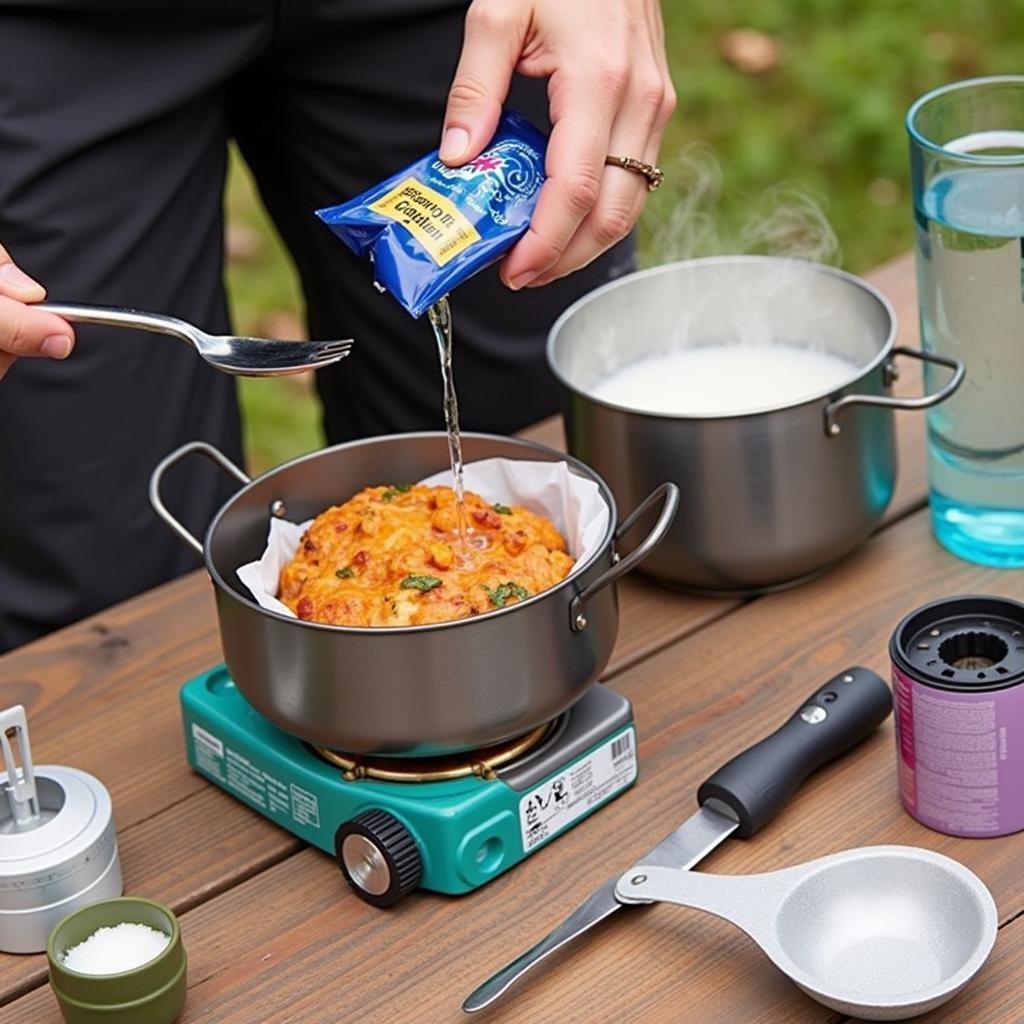A Backpacking Food Sack is the heart of any backcountry adventure. It’s where you store the fuel that keeps you going, the tasty rewards after a long day’s hike. Choosing the right one and packing it efficiently is crucial for a successful trip. This guide will delve into everything you need to know about backpacking food sacks, from choosing the right material to mastering the art of meal planning. Let’s dive in!
Choosing the Right Backpacking Food Sack
The perfect backpacking food sack needs to be lightweight, durable, and easy to access. You’ll want something that can withstand the rigors of the trail, protect your food from critters, and keep everything organized. Several options exist, each with its pros and cons. Popular choices include lightweight nylon sacks, odor-proof bags, and even repurposed dry bags. Consider the length of your trip, the type of food you’ll be carrying, and the expected weather conditions when making your selection. A zpack food bag is an excellent option for lightweight backpacking.
What are the key features to look for? Durability is essential, so look for reinforced seams and tear-resistant materials. A drawstring closure or roll-top design will help keep out moisture and pests. Transparency can be a bonus, allowing you to quickly identify what’s inside without unpacking everything.
Meal Planning for Your Backpacking Trip
Once you’ve chosen your backpack for food, it’s time to think about what you’ll be putting inside. Meal planning is a critical aspect of backpacking. You need to balance nutrition, weight, and ease of preparation. Freezer dried food is a popular choice for its lightweight and long shelf life.
What are some lightweight and nutritious meal ideas? Oatmeal with dried fruit and nuts for breakfast, tuna pouches with crackers for lunch, and instant noodles with dehydrated vegetables for dinner are all great options. Don’t forget snacks! Trail mix, energy bars, and dried fruit are essential for keeping your energy levels up between meals.
Protecting Your Food from Wildlife
Protecting your food from wildlife is paramount in the backcountry. Animals like bears, raccoons, and squirrels are attracted to the smell of food and can quickly tear through a poorly protected food sack. Proper storage techniques are essential to prevent unwanted encounters and protect your precious food supply.
How do you keep your food safe from critters? Using an odor-proof bag is a good start, but you’ll also want to consider hanging your food sack from a tree branch or storing it in a bear canister. Check regulations for the area you are hiking in as some require specific storage methods.
Packing Your Backpacking Food Sack Like a Pro
Efficient packing is key to maximizing space and minimizing weight. Organize your food by meal and day, using zip-lock bags or reusable containers to keep things separate. Place heavier items at the bottom of your sack and lighter items at the top. This will help distribute the weight evenly and make your pack more comfortable to carry.
Are there any tips for maximizing space? Remove excess packaging whenever possible. For example, repackage bulky items into smaller, more compact containers. Label everything clearly so you know what you have without rummaging through your sack.
 Lightweight Backpacking Meal Preparation
Lightweight Backpacking Meal Preparation
Minimizing Food Waste on the Trail
Minimizing food waste is important for both environmental and practical reasons. Plan your meals carefully and bring only what you need. Pack out all trash, including food scraps and packaging. Properly storing your food will also help prevent spoilage. Consider your thru hiking food options to ensure minimal waste.
Conclusion
Choosing and packing the right backpacking food sack is an essential part of any successful backcountry trip. By following the tips and guidelines outlined in this article, you can ensure you have the fuel you need to enjoy your adventure while keeping your pack light and your food safe. Remember to prioritize lightweight, durable materials, plan your meals carefully, and take the necessary precautions to protect your food from wildlife. With a little planning and preparation, your backpacking food sack will become your trusted companion on the trail.
FAQ
-
What is the best material for a backpacking food sack?
Lightweight and durable nylon or cuben fiber are excellent choices. -
How do I protect my food from bears?
Use bear canisters or hang your food sack from a tree branch, following proper techniques. -
What are some good lightweight backpacking meals?
Freeze-dried meals, instant noodles, oatmeal, and tuna pouches are all good options. -
How do I minimize food waste on the trail?
Plan your meals carefully, bring only what you need, and pack out all trash. -
What are some good snacks for backpacking?
Trail mix, energy bars, and dried fruit are great for keeping your energy levels up. -
How do I organize my food sack?
Organize by meal and day, using zip-lock bags or reusable containers. -
Where can I find more information about camping food storage containers? Try checking out some camping food storage containers.
Need help with your backpacking food sack? Contact us! Phone: 02437655121, Email: [email protected] Or visit us at: 3PGH+8R9, ĐT70A, thôn Trung, Bắc Từ Liêm, Hà Nội, Việt Nam. We have a 24/7 customer service team.